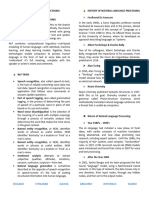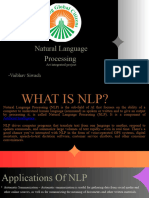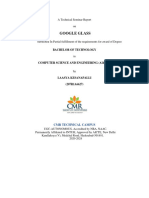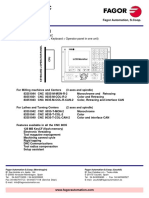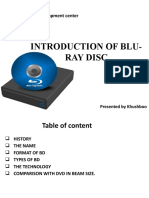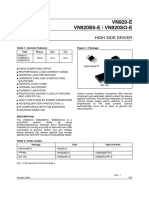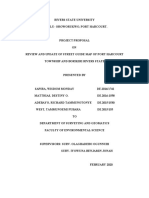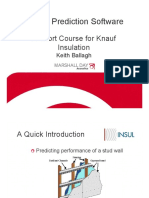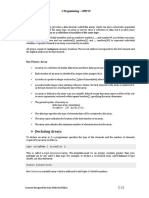0% found this document useful (0 votes)
1 views17 pagesUnit 6 Natural Language Processing 1
The document provides an overview of Natural Language Processing (NLP), explaining its importance in enabling computers to understand human languages through various applications like voice assistants, language translation, and sentiment analysis. It outlines the stages of NLP, including lexical analysis, syntactic analysis, and semantic analysis, and discusses text normalization techniques such as tokenization and stemming. Additionally, it introduces the Bag of Words model and TFIDF for feature extraction and word value identification in text processing.
Uploaded by
anshikajaisinghCopyright
© © All Rights Reserved
We take content rights seriously. If you suspect this is your content, claim it here.
Available Formats
Download as PDF, TXT or read online on Scribd
0% found this document useful (0 votes)
1 views17 pagesUnit 6 Natural Language Processing 1
The document provides an overview of Natural Language Processing (NLP), explaining its importance in enabling computers to understand human languages through various applications like voice assistants, language translation, and sentiment analysis. It outlines the stages of NLP, including lexical analysis, syntactic analysis, and semantic analysis, and discusses text normalization techniques such as tokenization and stemming. Additionally, it introduces the Bag of Words model and TFIDF for feature extraction and word value identification in text processing.
Uploaded by
anshikajaisinghCopyright
© © All Rights Reserved
We take content rights seriously. If you suspect this is your content, claim it here.
Available Formats
Download as PDF, TXT or read online on Scribd
/ 17












